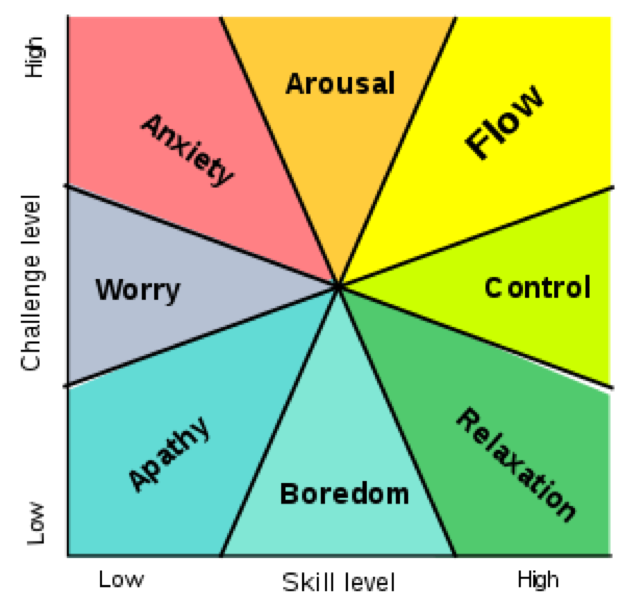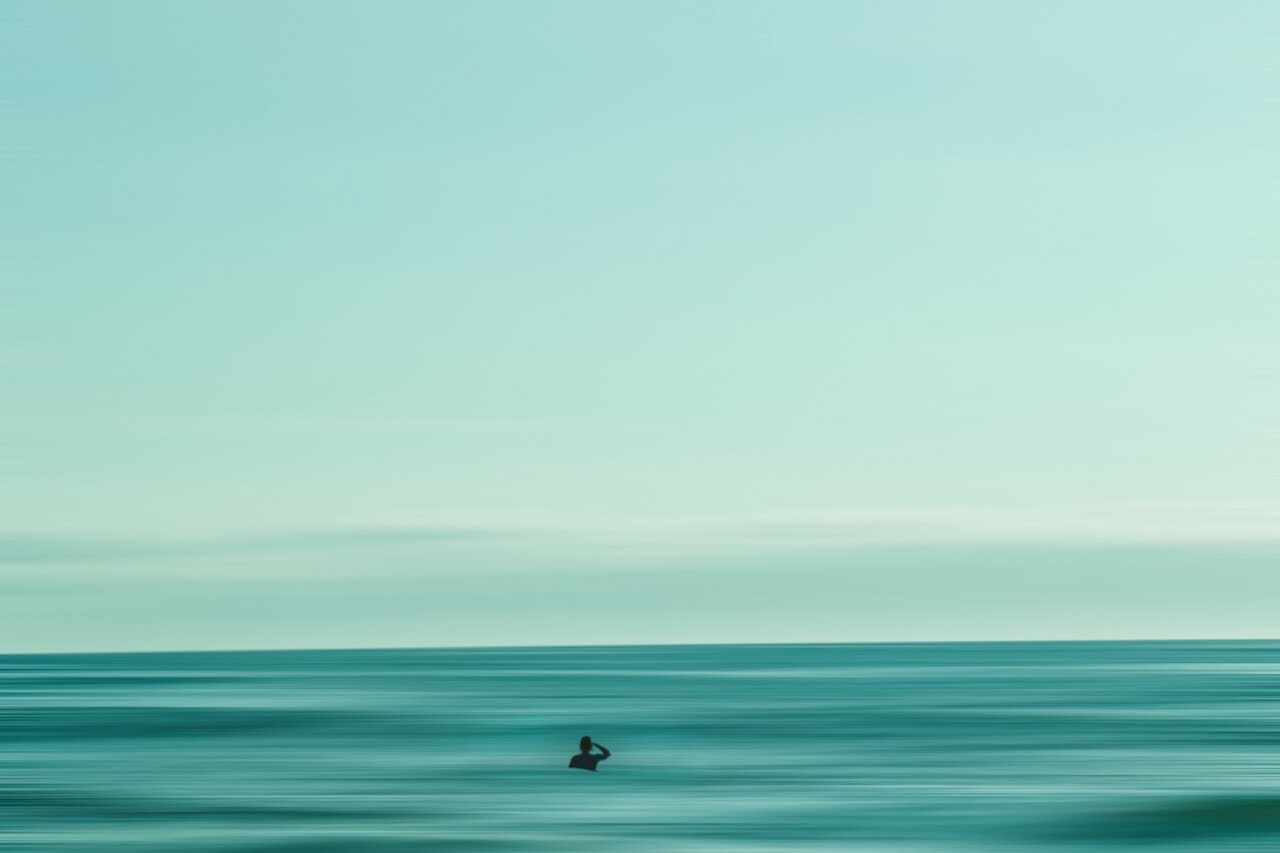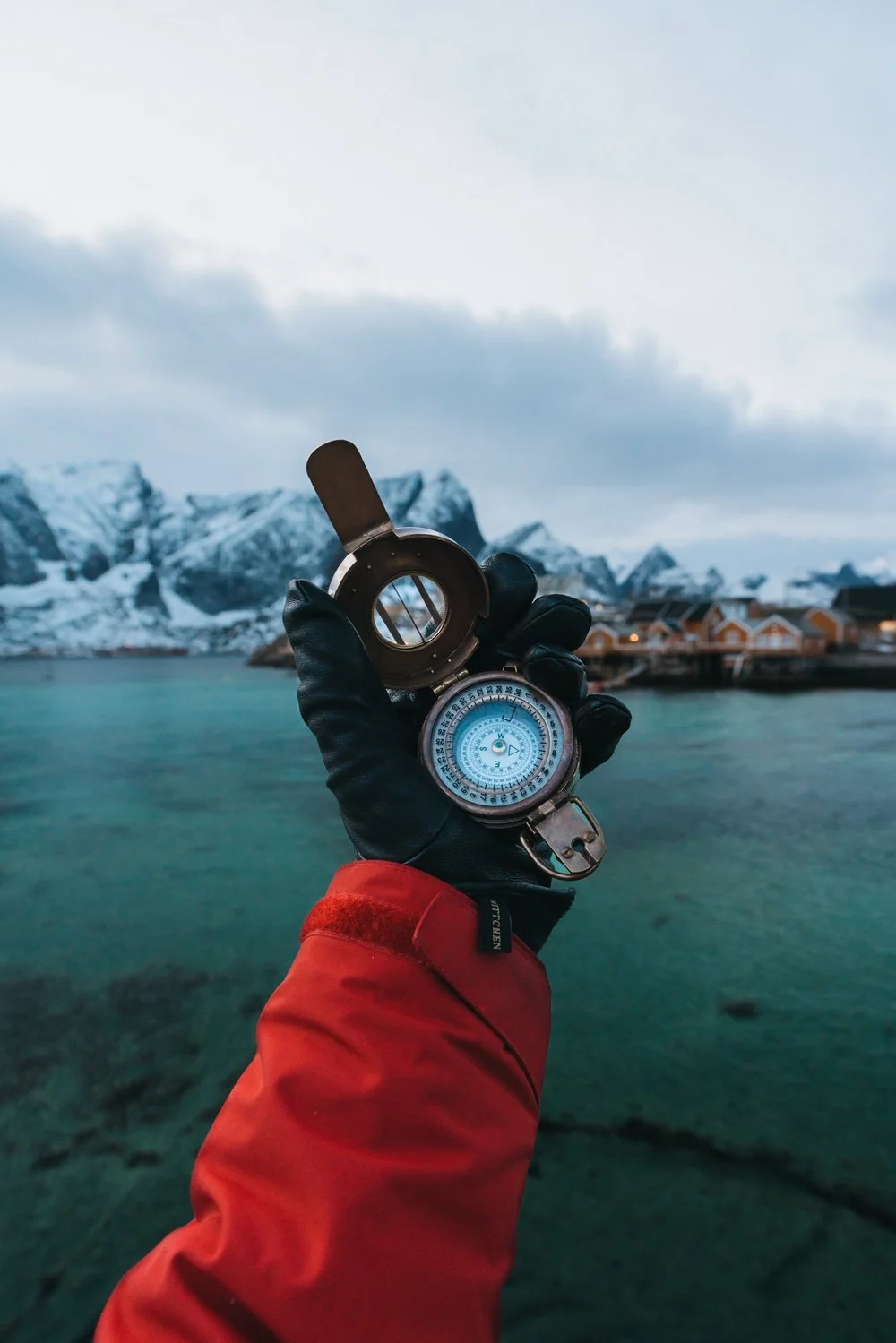Back in the days when people were still using pagers, the godfather of positive psychology – Mihaly Csikszentmihalyi – did a large-scale experiment. He wanted to determine which life experiences were most likely to lead to happiness.
The experiment involved correctly chanting his name thirteen times into a mirror, and he’d appear right behind you.
Not quite. Csikszentmihalyi and his team provided thousands of people from all walks of life with a pager that would go off at random intervals during the day. As soon as the device started buzzing, participants were then required to score themselves on a happiness scale. They’d write down how they felt and what they had been thinking about at that moment.
This experiment showed that regardless of nationality, age or gender, there’s a common theme when it comes to joyful experiences.
When in flow, your thoughts, feelings, and actions are so aligned that you completely lose track of time and yourself – that’s how concentrated you are on the task.
He called this experience flow.
What does being ‘in flow’ feel like?
To understand what being in flow feels like, think back to when you were so involved in an activity that you felt totally ‘in the zone’. Time disappeared. Minutes turned into hours, and maybe you even forgot to eat, drink, or pee.
When in flow, your thoughts, feelings, and actions are so aligned that you completely lose track of time and yourself – that’s how concentrated you are on the task.
Whether you’re crocheting jackets for orphaned penguins, going for a 5k run for the first time, or putting on the finishing touches on a kick-arse presentation in Google Slides – you’re so hyper-focused on what you’re doing that everything else feels in harmony.
You’re so engaged with what you’re doing that all your mental power and bandwidth are taken up. There’s simply no space for anything else, including self-awareness. That’s also why you never realise you’re in flow until the experience has passed.
Conditions for flow
The biggest flow-killer is known as psychic entropy ¬– in other words, conflict and distractions.
One example of psychic entropy is me taking seven minutes to finish that previous sentence. I got stuck in a rabbit hole reading about Joe and Lucie's romantic shenanigans on Love Island UK while trying to find a cleverer word for conflict.
‘Entropy’ sounds nice though.
How we deal with distractions depends on the person. Take writing, for example. Some authors produce their best works while knocking down a caramel Frappuccino in the local Starbucks. Others have to lock themselves up in a five-star hotel to get the job done.
Personally, I’ll write anywhere that serves beige-colored food and doesn’t play Ellie Goulding.
Flow doesn’t come immediately either. Most people take twenty to forty minutes before they get into the zone – provided of course they don’t get distracted in the meantime.
n addition, for an activity to become a flow experience, there need to be some clear goals and immediate feedback on how well you’re doing. Without that feedback loop, you wouldn’t be motivated. It would be like playing a keyboard that wasn’t plugged in or singing without hearing yourself. (I hope you’re reading this, Ellie).
Lastly, you need to be in full control of the activity, so you can’t just be a spectator. In other words, it needs to be voluntary. That is why many people fail to create flow at work. They feel they’ve no control over the output or the time they put in.
Complexity versus skill and the 4% rule
All flow activities are enjoyable, but not all enjoyable activities provide flow.
Indeed, for an activity to be both enjoyable and flowing, your skills need to match the complexity of that activity more or less.
If you look at the graph below – challenge level versus skills – you’ll notice a point where both axes meet. This is where the balance tips towards more positive emotions like arousal, control (or comfort), relaxation and flow. The higher your skill level, the more likely it is you’ll enjoy an activity.
o achieve flow, you need to encounter a challenge that’s testing enough for your skills. But those skills also need to be just below the level you need to meet the challenge.
That just below-bit is essential. Your skill levels are almost matched, but not entirely – so you’re stretching yourself.
There’s consensus that the optimal challenge level should be 4%.
When your skills levels are 4% lower than what’s required, you reach a sweet spot where you know you might be able to do it if you try hard and focus. One way of finding this sweet spot is to slightly reduce the time you give yourself to do a particular task. You’ll know you’re in that spot if you meet your expectations half the time and the other half you don’t.

Say you’re a medium tennis player who’s up against an opponent in the next league. You might get your arse kicked, but because the skill level required from you is only slightly higher than where you’re at, you’re likely to achieve a flow after playing for some time. Competing against your seven-year-old nephew is unlikely to provide you with the same flow experience. Unless you’re playing a future Serena Williams of course.
This is also why most people don’t enjoy doing the same thing at the same level for too long – they become bored, frustrated and apathetic.
In Csikszentmihalyi’s words: ‘Flow transforms the self by making it more complex. In this growth of the self lies the key to flow activities.’
How to get yourself in the zone
Although flow is always an enjoyable experience, it isn’t always a positive experience.
Take gaming, for example. Most video games are based on combining skill improvement with heightened complexity as the game progresses. But even though video games can provide a lot of flow after a long day at work, playing six hours straight without leaving the couch hardly classifies as an optimal experience.
Here are eight things you can practise to develop more flow in your life.
#1. Deal with your baggage
Let’s start with the hardest one first. Your pent-up frustrations, anxieties and traumas are major flow killers. In The Untethered Soul, Michael Singer calls them the ‘thorns in your arm’ – painful to touch, so we do everything we can to make sure nothing or nobody ever gets near them. Rather than letting them continue to drain your emotional bandwidth, you need to pull them out one by one. Start seeing a therapist if you have access to one. Resolve whatever needs to be resolved internally to reduce your emotional turmoil.
#2 Develop autotelic personality traits
Autotelics are people with a clear sense of being in control of their lives most of the time. They rarely complain because they’ve developed a mindset that derives enjoyment and happiness from all sorts of situations. Their hopes of success are stronger than their fears of failure. Become more autotelic by deciding to actively enjoy whatever you’re doing from on and leading a vigorous life, as well as showing curiosity to as wide a variety of life experiences as possible.
#3: Pay closer attention to the outside world
Nothing better to clear negativity and mind-chaos than a decent walk. Being outside rekindles a sense of spaciousness and curiosity. You’ll notice that drawing your attention externally allows you to enter a state of flow more quickly afterwards.
#4: Find intrinsic motivation
Linking in with #2, find enjoyment in whichever activity you’re doing, even if it involves scrubbing dirty toilet seats or updating boring spreadsheets. The dullest activities carry some pleasure in them when you set an intention to find joy. Whether it’s the satisfaction of a job well done or the relaxing ease that allows the mind to wander, finding intrinsic motivation in everything you do is the autotelic’s superpower.
#5 Get better at what you’re doing
Tying in with #4, cultivate a mindset of continuous improvement in everything you do. Keep asking yourself: ‘what can I do right now to become a tiny bit better at this?’ Constantly challenge yourself to enter that 4% sweet spot.
#6 Immerse yourself
Minimise all distractions. Remind yourself that while it’s possible to multi-task, it’s not possible to multi-focus. Leave your phone in another room. Close all tabs on your computer and in your head before starting a new task – unless they’re vital for performing that task.
#7 Have a warm-up ritual
Just like going for a walk, having a warm-up ritual will help you transition from scattered focus to single-pointed focus much faster than if you were to transition naturally. For example, listen intently to a piece of music for a few minutes. After that, purposely direct your focus to the task at hand. I always play my little hang drum for a few minutes before each coaching session.
#8 Practise mindfulness
This is somewhat contradictory because mindfulness and flow are technically incompatible. Mindfulness requires you to maintain self-awareness throughout an activity, while flow requires you to lose it. Studies show that although mindfulness stops you from losing yourself in an activity, it drastically enhances another element of flow – the feeling of being utterly in control.
Where do we flow from here?
Genuine happiness doesn’t lie in the pursuit of moments of pure ecstasy. Those rock star experiences might make you feel alive and look great on Instagram. Filling your life with flow experiences – focusing our efforts on something challenging and worthwhile – is where true joy is found.

